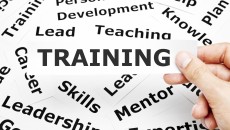We rather promptly bring together a squad of learning and performance professionals to analyze a business requirement and implement a learning and performance solution, agreeing on set timelines and a budget. However, do we invest in an effective approach to enhance the likelihood of such initiatives achieving the expected result?
Like any other project, a workplace learning and performance (WLP) project is a temporary (a beginning and end in time) group endeavor to produce a unique product, service or result to meet the expectations of a group of people (stakeholders) who have vested interest in its outcomes. And it is important that WLP project activities are planned, organized, and controlled in a way that allows to meet the needs of its stakeholders, through a consistent approach that is both structured and flexible enough to adapt to their changing needs.
Investing in project management…
Be it major or minor, simple or complex, a WLP project will usually follow a simple life cycle of starting the project, organizing, executing project work, and closing the project. Investing in effective project management (PM) practices will ensure a greater probability of achieving the desired result from our WLP projects.
The Project Management Institute (PMI) recommends 5 groups of project management activities (processes) that when orchestrated effectively will assist in creating a symphony of the project activities to deliver the expected results.
They are:
- Initiating
- Planning
- Executing
- Monitoring and Controlling
- Closing
It is important for us to understand the difference between project activities and project management activities. The project activities (tasks) are determined by the method or approach we use to build the learning and performance solution. And project management activities depend on the project management standards (methodology) that we intend to practice in our projects.
Setting project expectations…
‘All that begins well ends well’, they say. Right at the inception of the project, it is important we understand and document its purpose and the outcome that it is meant to achieve (benefit). We can do this by creating an opening document (project charter) to capture preliminary essential information about the WLP project.
In the project charter, we identify and list the key stakeholders of the project (stakeholder register), who will ultimately be the judge of the project’s success.
Knowing the ‘sponsor’, ‘customer’ and ‘user’ of a project will help us manage their expectation through better communication and focus on their priorities.
- The sponsor is a person or group that provides the financial resources for the project, usually the division or business unit heads.
- The customer is a person or group that has requested the project as a solution to some expected business outcome.
- The user is a person or group that is the target audience of the WLP project and will be the direct beneficiaries of the outputs of the project.
As in most learning and performance approaches, we can document the expectations (needs, objectives, measures) at different levels as business (impact), performance (application), learning (learning) and preference (reaction), or use any similar levels specific to the approach being proposed.
Further to the approach, we will include what we will deliver to meet the expectations (scope) and to what standards (quality). We will mention the time and budget expectations (constraints) and priorities of the main stakeholders concerning these and other constraints.
Based on the above information, we can also capture possible threats to the success of the project (risks) and propose a shared strategy for managing the riskier aspects of the project.
The project charter can serve as an effective tool for initiating a WLP project by capturing stakeholder expectations and other essential preliminary information. It is also a live document to share with stakeholders, and acquire any formal approval or signoff for initiating a WLP project or any future updates to it. As we progress into the planning stages of the project, most initial inputs for how the project activities will be managed (project plan) will come from the project charter.






